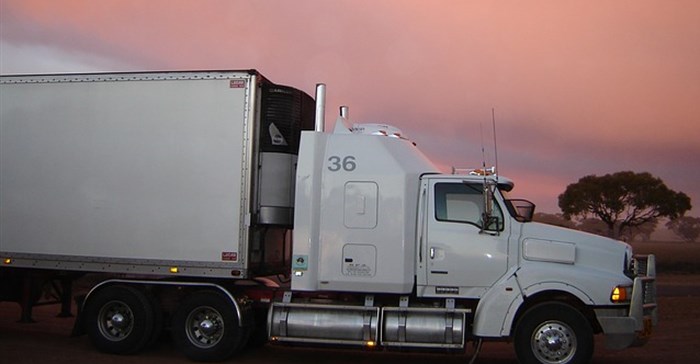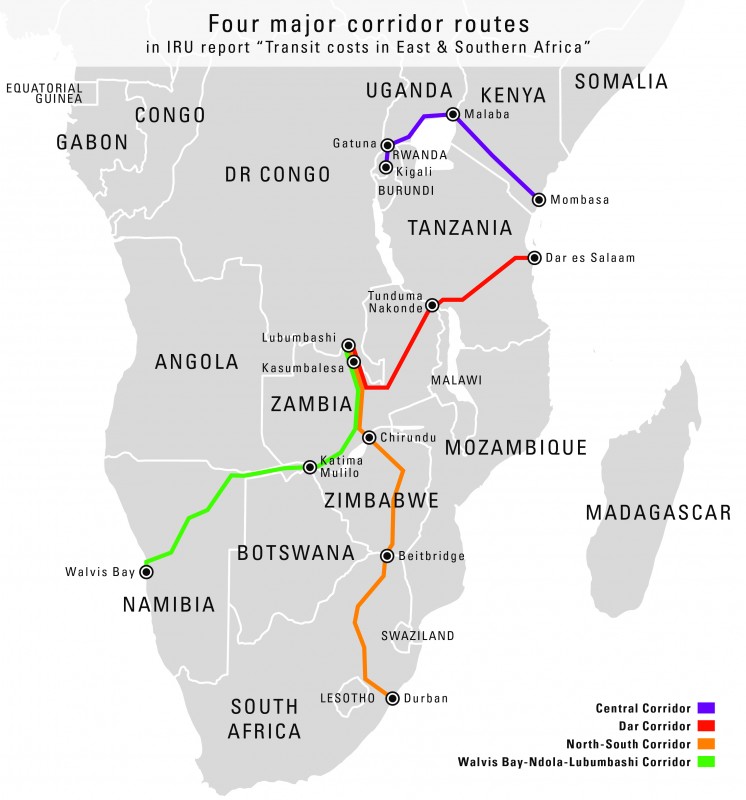TIR has, since 1949, made international freight transits faster, more efficient and more secure, helping increase trade, boosting economic growth and making communities stronger. With TIR, goods are contained in sealed load compartments, and the contents are detailed in a TIR Carnet. This essential document accompanies the driver and the cargo along its journey. Customs simply have to verify the Carnet and that the seals are intact, rather than spend time opening the container and physically check the load.
Umberto de Pretto, IRU secretary general said, “Some of the world’s highest trade costs can be found in Africa and the world’s road transport organisation, IRU, is working to support governments and the private sector to reduce these costs.”
He continued “The report results show that TIR is up to 16 times less expensive than the national bond system on the Northern Corridor between Walvis Bay and Lubumbashi, and is also substantially more cost efficient on the three other African trade corridors in the study.” The report unequivocally concludes that the TIR system is the most cost-effective transit bond method and could be deployed on all trade corridors in Africa.
Working towards accession and implementation
TIR, the world’s only universal customs transit system and one of the most successful international transport conventions, has a big role to play in reducing the costs of trade. TIR makes border crossings faster, more secure and more efficient, reducing transport costs and boosting trade and development.
The TIR Convention is gaining momentum with government authorities and businesses on Africa’s trade corridors. IRU is working closely with stakeholders in Kenya, Uganda, Tanzania, Zambia and Namibia to analyse the potential benefits of TIR and to work towards accession and implementation.
Clive Smith from Walvis Bay Corridor Group said “Implementing TIR along the Walvis Bay Corridor could have a huge impact on reducing the cost of moving goods between the port and the hinterland. It makes total sense to be looking at implementing a trade facilitation solution that is already proven and successful.”
“TIR fits with Namibia’s vision to become a logistics hub for Southern Africa and we are really keen to see concrete steps taken towards implementation in the region” he added.
Cost comparisons
The IRU report provides detailed cost comparisons between the three different methods of acquiring guarantees for goods in transit to meet the requirements of the different revenue authorities. TIR is the most harmonised system that reduces transit costs and time, reduces documentation and simplifies the clearing process.
The report analyses the comparative costs of using a national bond, the Common Market for East and Southern Africa (COMESA) Regional Customs Transit Guarantee (RCTG) Carnet, and the IRU TIR Carnet, for two types of cargo (containerised load and tanker transporting liquid bulk).
The comparisons are along four major transit corridor routes; namely North-South Corridor (Durban to Lubumbashi), Walvis Bay-Ndola-Lubumbashi Corridor, Dar Corridor (Dar es Salaam to Lubumbashi) and the Northern Corridor (Mombasa to Kigali).



































